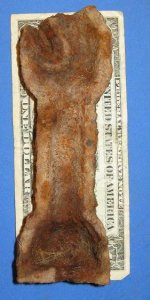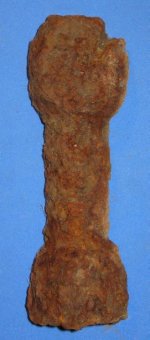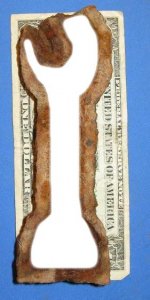Breezie
Gold Member
- Oct 3, 2009
- 6,269
- 2,119
- 🥇 Banner finds
- 1
- Detector(s) used
- White's DFX & Spectrum~Garrett's Pro-Pointer~VibraProbe
- Primary Interest:
- Metal Detecting
Hey Y'all, I'm not sure, but I think this is some type of mold for casting, although there is no hole at the bottom end for release. In the last pic, I drew in what the shape would be, which looks like some type of wrench or pick, but the bottom part being roundish and flat doesn't look like any kind of tool. Any ideas would be appreciated, Breezie











